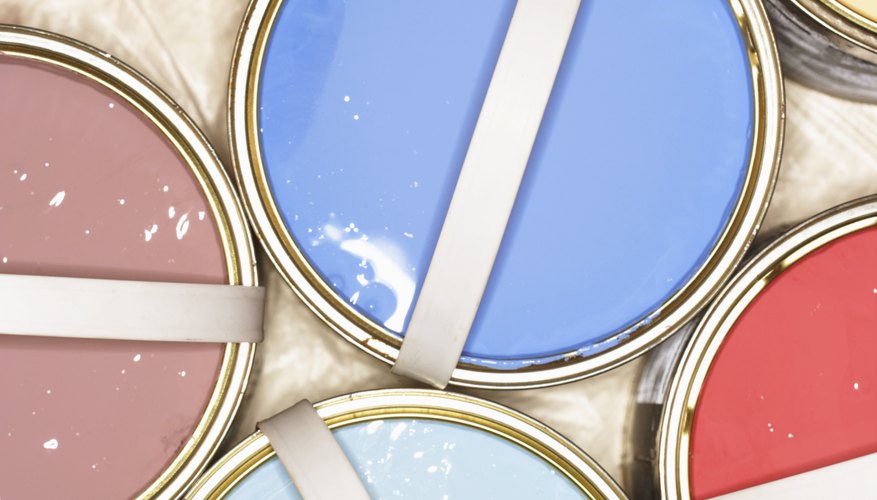Many houses built before the 1980s used vinyl tiles containing asbestos as flooring. While asbestos is a frightening word for homeowners, the durability of these tiles means the best way to handle them is to cover them with other flooring. Intact tiles can painted cheaply to give floors in your home a more modern look.
Asbestos issues
From the 1950s to the 1980s, almost every vinyl floor tile sold contained between 2 per cent and 10 per cent asbestos. Asbestos is a fibrous mineral that's heat- and fire-resistant and absorbs sound, making it a popular building material. However, it was discovered that inhaling asbestos fibres could cause serious illness and the use of asbestos was drastically curtailed in homes and workplaces. Most 22.5 cm (9 inch) vinyl tiles and many 30 cm (12 inch) tiles and the mastic adhesive that anchors them to the subfloor contain a level of asbestos, though the harmful fibres are securely embedded into the vinyl material. Because removing the tiles can disturb this trapped asbestos, the best strategy for dealing with vinyl tiles in your home is simply to cover them with flooring or paint.
- From the 1950s to the 1980s, almost every vinyl floor tile sold contained between 2 per cent and 10 per cent asbestos.
- Most 22.5 cm (9 inch) vinyl tiles and many 30 cm (12 inch) tiles and the mastic adhesive that anchors them to the subfloor contain a level of asbestos, though the harmful fibres are securely embedded into the vinyl material.
Preparing for paint
Intact vinyl asbestos tiles are non-friable, which means such tiles are unlikely to release asbestos fibres into the air. Inspect the floor for cracked, broken or heavily worn tiles or exposed adhesive that may contain asbestos. Have a qualified contractor remove or repair damaged flooring. Prepare the floor for painting by removing any wax or polish. Never use sandpaper, abrasive pads, wire brushes or a power stripper on asbestos floor tiles. Instead, use chemical solvents such as trisodium phosphate or a mixture of one part rubbing alcohol to three parts water. Vacuum the floor to remove any remaining dust and dirt.
- Intact vinyl asbestos tiles are non-friable, which means such tiles are unlikely to release asbestos fibres into the air.
- Inspect the floor for cracked, broken or heavily worn tiles or exposed adhesive that may contain asbestos.
Painting the floor
Use an oil-based primer to seal the floor and further encapsulate the asbestos fibres. Remove the baseboards or cover them with masking tape and use a brush or roller to evenly coat the floor, leaving an "escape route" so you won't be trapped until the paint dries. After the floor is primed, use oil-based paint to cover the tiles. Oil paint adheres and resists wear better than latex-based paint.
If you expect your floor to receive heavy traffic, consider coating the paint with polyurethane. Let the paint cure for two or three days, then apply three coats of clear, water-based polyurethane. Plan to add a maintenance coat of polyurethane every two years.
- Use an oil-based primer to seal the floor and further encapsulate the asbestos fibres.
- If you expect your floor to receive heavy traffic, consider coating the paint with polyurethane.
